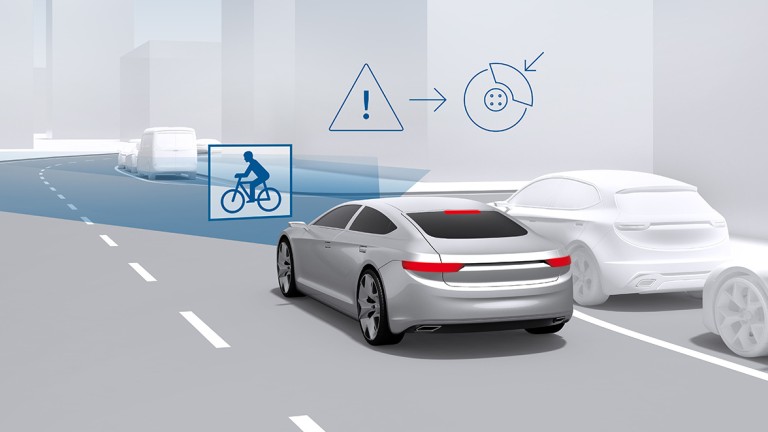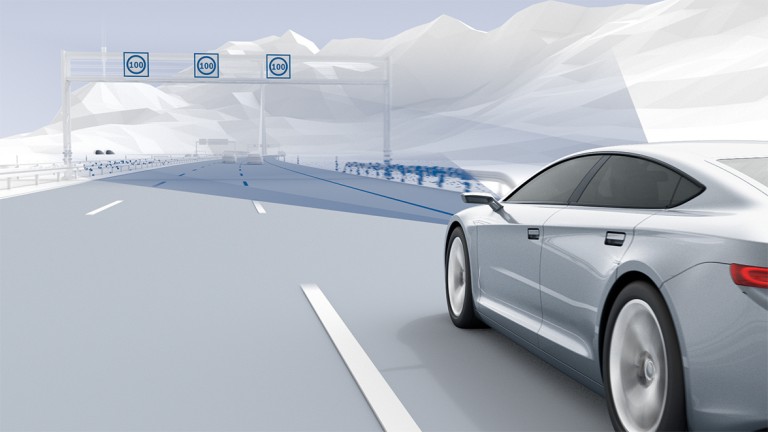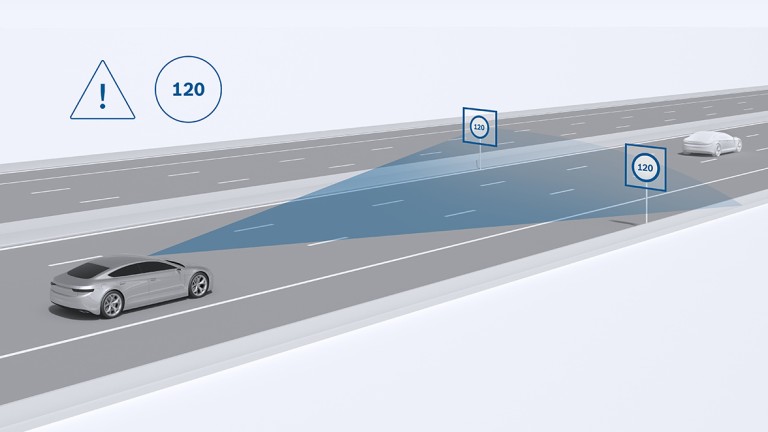Operation principle of the multi purpose camera
During assisted and automated driving, the vehicle must know what is happening in its surroundings at all times. It must reliably detect objects and people, and be able to react to these appropriately. Here, the latest generation of the front video camera from Bosch plays a crucial part: The multi purpose camera for assisted and partially automated driving utilizes an innovative, high-performance system-on-chip (SoC) with a Bosch microprocessor for image-processing algorithms. Its unique multipath approach combines classic image-processing algorithms with artificial-intelligence methods for comprehensive scene interpretation and reliable object detection.
With its algorithmic multipath approach and the innovative system-on-chip, this camera generation has been specially developed for high-performance driver assistance systems. In line with this approach, the multi purpose camera uses for example the following technical paths at once for image processing:
The first of these is the conventional approach already in use today. Via preprogrammed algorithms, the cameras recognize the typical appearance of object categories such as vehicles, cyclists, or road markings. The second and third paths are new, however. For the second path, the camera uses the optical flow and the structure from motion (SfM) to recognize raised objects along the roadside, such as curbs, central reserves, or safety barriers. The motion of associated pixels is tracked. A three-dimensional structure is then approximated based on the two-dimensional camera image. The third path relies on artificial intelligence. Thanks to machine-learning processes, the camera has learned to classify objects such as cars parked by the side of the road. The latest generation can differentiate between surfaces on the road and those alongside the road via neuronal networks and semantic segmentation. Additional paths are used as required: These include classic line scanning, light detection, and stereo disparity.






